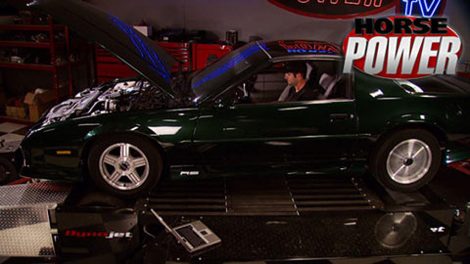More '92 Chevy Camaro "Lean Green" Episodes
HorsePower Builds
Want more content like this?
Join the PowerNation Email NewsletterParts Used In This Episode
[none]
Royal Purple Purple Ice coolant additive.
[none]
Royal Purple synthetic gear oil, Max-ATF, 5W-30 Synthetic motor oil.
Accel
Cap and rotor kit, external HEI coil, ignition module, and spark plug wire set.
B&M Racing
B&M Shift Improver Kit and Torque convertor lock-up switch for 700R4.
CFM Technologies
Throttle body spacer for most 86-92 GM.
Heartthrob Exhaust,Inc.
3" single/2-1/2" dual tail pipes w/transverse welded HVS muffler.
Hedman Hedders
HTC coated shorty style emissions legal headers.
Hypertech
Thermo-Master computer chip, Thermostat, Cool fan switch.
Lizard Skin LLC
Lizard Skin Ceramic Insulation, Lizard Skin Sound Control Formula, Super Pro Spray Gun
Applicator Kit.
Loctite
Black silicone, gasket adhesive, thread sealant.
Meziere Enterprises,Inc.
Electric high flow water pump with idler pulley, wiring installation kit.
O'Reilly Auto Parts
O.E. Direct fitment catalytic convertor.
Power Tool Box
Rotary Dual Outlet Nitrogen/Air Compressor by Chicago Pneumatic.
Spectre Performance
Carb hat, one standard, one low profile, 2- 90 degree, 2- 60 degree, 2- 45 degree, 2-straight, couplers, foam inserts, Quik-Fab universal kit.
Summit Racing
GTS smoke headlight covers.
Summit Racing
Summit electric 14" low profile electric fan.
Taylor Cable Products
Battery relocation kit supplied with wires.
































